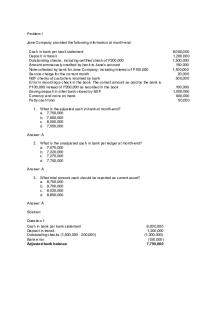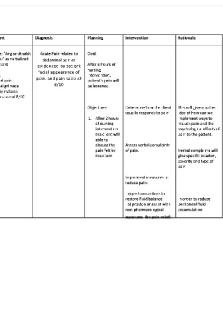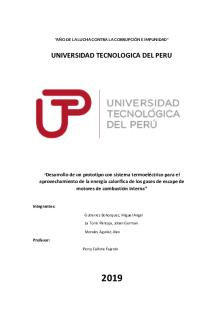Solution-manual-contemporary-labor-economics-10th-edition-by-campbell-mcconnell-slm1048 compress PDF

| Title | Solution-manual-contemporary-labor-economics-10th-edition-by-campbell-mcconnell-slm1048 compress |
|---|---|
| Author | Adekoya O. Isiaka |
| Course | Mathematical method |
| Institution | University of Ilorin |
| Pages | 4 |
| File Size | 108.4 KB |
| File Type | |
| Total Downloads | 44 |
| Total Views | 154 |
Summary
Download Solution-manual-contemporary-labor-economics-10th-edition-by-campbell-mcconnell-slm1048 compress PDF
Description
Chapter 02 - The Theory of Individual Labor Supply
Download Full Solution Manual Contemporary Labor Economics 10th Edition by Campbell McConnell Click on link to Download : http://textbookexams.com/product/solution-manual-contemporary-laboreconomics-10th-edition-by-campbell-mcconnell/
CHAPTER 2 The Theory of Individual Labor Supply I.
THE WORK-LEISURE DECISION: BASIC MODEL A. Indifference Curves 1. Negative Slope 2. Convex to Origin 3. Indifference Map 4. Different Work-Leisure Preferences B. Budget Constraint C. Utility Maximization D. Wage Rate Changes: Income and Substitution Effects 1. Income Effect 2. Substitution Effect 3. Net Effect E. Graphic Portrayal of Income and Substitution Effects F. Rationale for Backward-Bending Supply Curve G. Empirical Evidence H. Elasticity versus Changes in Labor Supply
II.
APPLYING AND EXTENDING THE MODEL A. Nonparticipants and the Reservation Wage B. Standard Workday 1. Overemployment 2. Underemployment C. Premium Pay versus Straight Time D. Income Maintenance Programs 1. Three Basic Features a. The Income Guarantee or Basic Benefit, B b. The Benefit-Reduction Rate, t c. The Break-Even Level of Income, Yb 2. Illustration 3. Controversy E. The End of Welfare as an Entitlement
WORLD OF WORK 2-1 © 2013 by McGraw-Hill Education. This is proprietary material solely for authorized instructor use. Not authorized for sale or distribution in any manner. This document may not be copied, scanned, duplicated, forwarded, distributed, or posted on a website, in whole or part.
Chapter 02 - The Theory of Individual Labor Supply
1. 2. 3 4.
Work Hours Linked to Mother Nature The Carnegie Conjecture Labor Supply of New York Cab Drivers The Labor Supply Impact of the Earned Income Tax Credit
GLOBAL PERSPECTIVE 1. Annual Hours of Work per Employee
2-2 © 2013 by McGraw-Hill Education. This is proprietary material solely for authorized instructor use. Not authorized for sale or distribution in any manner. This document may not be copied, scanned, duplicated, forwarded, distributed, or posted on a website, in whole or part.
Chapter 02 - The Theory of Individual Labor Supply
LEARNING OBJECTIVES After learning the material in Chapter 2 of Contemporary Labor Economics, the student should be able to: 1.
graph an indifference map for a person who values leisure and income
2.
explain how the slope of the indifference curve relates to the marginal rate of substitution of leisure for income
3.
explain why there is a diminishing marginal rate of substitution of leisure for income, which results in convex indifference curves
4.
explain why indifference curves farther from the origin represent higher levels of utility
5.
relate personal differences in work-leisure preferences to personal differences in the shapes of indifference curves
6.
graph an income-leisure budget constraint and explain how its slope relates to the wage rate
7.
identify, using the basic income-leisure model, an individual’s optimal combination of income and leisure
8.
distinguish between the income effect and substitution effect of a wage change and isolate each on a graph
9.
explain, in terms of income and substitution effects, the rationale for a backward-bending labor supply curve
10.
Correctly define and calculate the wage elasticity of labor supply
11.
explain why a person with non-labor income may choose not to participate in the labor force, relating this decision to the concept of the reservation wage
12.
explain why a person may choose to “moonlight” or to work part-time
13.
show in a graph how unpaid absenteeism may be related to requirements that people work a standard 40-hour week
14.
show graphically that a person’s utility-maximizing number of work hours may increase in response to a premium wage for overtime work
15.
examine an income maintenance plan and determine the basic benefit, the benefit-reduction rate, and the break-even level of income
16.
show, using the income-leisure model, why an income maintenance plan may reduce incentives to work
17.
Relate provisions of the Temporary Assistance for Needy Family program to the drop in welfare caseloads over the past 10 years
2-3 © 2013 by McGraw-Hill Education. This is proprietary material solely for authorized instructor use. Not authorized for sale or distribution in any manner. This document may not be copied, scanned, duplicated, forwarded, distributed, or posted on a website, in whole or part.
Chapter 02 - The Theory of Individual Labor Supply
ANSWERS TO SELECTED END-OF-CHAPTER QUESTIONS 2.
Work more hours in (a) and (b); fewer hours in (c) and (d).
4.
The outcome assumes the substitution effect is stronger than the income effect. The statement reflects empirical evidence that the substitution effect strongly dominates the income effect for females, but they roughly offset each other for males.
5.
She will choose the high-wage option. She will feel underemployed, but this option will allow her to reach a higher indifference curve (a higher level of utility.)
6.
The lump-sum tax increases work effort through a pure income effect; the proportional tax may either increase or reduce work effort depending on the relative strengths of the opposing income and substitution effects.
11.
The subsidy is $2400 ($3000 – .3 x $2000). The total income is $4400 ($2000 + the $2400 subsidy.) The break-even level of income is $10,000 ($3000 / .30).
12.
HBW’ entails a zero benefit-reduction rate and the weakest disincentives to work. In contrast, HBYW entails a 100% benefit-reduction rate and the strongest disincentives to work.
15.
An increase in the minimum wage may either increase or decrease desired work hours for those already in the labor market depending on the relative strengths of the substitution and income effects. The substitution effect of the higher wage will increase desired hours of work while the income effect will decrease desired hours of work. For those not in the labor force, there is only an income effect, encouraging participation. A direct grant of nonlabor income has only an income effect, reducing desired hours of work.
2-4 © 2013 by McGraw-Hill Education. This is proprietary material solely for authorized instructor use. Not authorized for sale or distribution in any manner. This document may not be copied, scanned, duplicated, forwarded, distributed, or posted on a website, in whole or part....
Similar Free PDFs

Ch2docx compress chapter 2
- 3 Pages

Esas-reviewer compress
- 50 Pages

Machine-design-refresherpdf compress
- 122 Pages

Lab-1 compress - FDSFDSDFS
- 4 Pages

Pdf-ncp-abdominal compress
- 2 Pages

Alimenta-tu-cerebropdf compress
- 1 Pages

Proyecto-caf-3 compress
- 29 Pages

Banggawan-qanda-456 compress
- 44 Pages

Pdf-gram-positivo compress
- 2 Pages

Corporate-liquidation compress
- 4 Pages

Camara-de-rejas compress
- 10 Pages

Guerra-del-acre compress
- 29 Pages

Tendances-a1 compress
- 47 Pages
Popular Institutions
- Tinajero National High School - Annex
- Politeknik Caltex Riau
- Yokohama City University
- SGT University
- University of Al-Qadisiyah
- Divine Word College of Vigan
- Techniek College Rotterdam
- Universidade de Santiago
- Universiti Teknologi MARA Cawangan Johor Kampus Pasir Gudang
- Poltekkes Kemenkes Yogyakarta
- Baguio City National High School
- Colegio san marcos
- preparatoria uno
- Centro de Bachillerato Tecnológico Industrial y de Servicios No. 107
- Dalian Maritime University
- Quang Trung Secondary School
- Colegio Tecnológico en Informática
- Corporación Regional de Educación Superior
- Grupo CEDVA
- Dar Al Uloom University
- Centro de Estudios Preuniversitarios de la Universidad Nacional de Ingeniería
- 上智大学
- Aakash International School, Nuna Majara
- San Felipe Neri Catholic School
- Kang Chiao International School - New Taipei City
- Misamis Occidental National High School
- Institución Educativa Escuela Normal Juan Ladrilleros
- Kolehiyo ng Pantukan
- Batanes State College
- Instituto Continental
- Sekolah Menengah Kejuruan Kesehatan Kaltara (Tarakan)
- Colegio de La Inmaculada Concepcion - Cebu
![[PDF] DAFTAR BAHAN MAKANAN PENUKAR compress compress](https://pdfedu.com/img/crop/172x258/9q6147kgjdxk.jpg)

